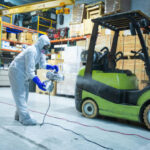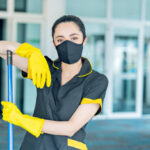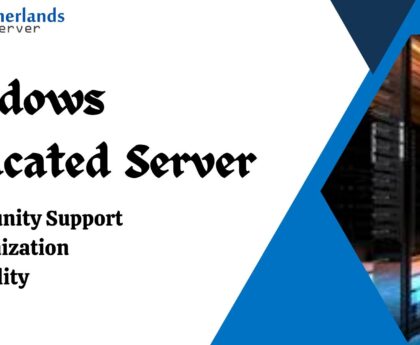Safety First: How School Cleaning Supports a Secure Learning Environment
In the wake of unprecedented challenges, ensuring the safety of students and staff in schools has become paramount. Among the various measures taken, the role of school cleaning has emerged as a cornerstone of maintaining a secure learning environment. In this article, we will explore how school cleaning practices contribute to the safety and well-being of everyone in educational institutions.
The Importance of Clean Schools
Cleanliness in schools extends far beyond aesthetics. It is closely linked to the health, safety, and overall well-being of students, teachers, and staff. Here’s why clean schools are essential:
Health and Hygiene
Schools are bustling hubs where germs can easily spread. Regular cleaning and disinfection of classrooms, restrooms, and common areas help reduce the risk of illnesses, including contagious diseases. A clean environment is essential for maintaining good health among students and staff.
Allergen Control
Many students suffer from allergies triggered by dust, pollen, and mold. Proper cleaning practices, such as vacuuming with HEPA filters and wiping down surfaces, help control allergens, creating a more comfortable learning space for all.
Mental Well-being
A clean and organized environment has a positive impact on the mental well-being of students. It reduces stress, anxiety, and distractions, allowing students to focus on learning and academic success.
The Three Pillars of School Cleaning
To ensure a safe and secure learning environment, school cleaning practices must adhere to the three pillars of cleanliness:
1. Routine Cleaning
Routine cleaning involves daily and weekly cleaning tasks. This includes sweeping, mopping, vacuuming, and wiping down surfaces in classrooms, hallways, and common areas. It prevents the buildup of dirt and germs, maintaining a baseline level of cleanliness.
2. Disinfection
Disinfection is the targeted removal of pathogens and harmful microorganisms. High-touch surfaces like doorknobs, desks, and restroom fixtures are regularly disinfected to prevent the spread of infections. Proper disinfection practices are crucial, especially during flu seasons and in the face of contagious diseases.
3. Deep Cleaning
Deep cleaning is a more intensive process that typically occurs during breaks or when students are not present. It involves a comprehensive cleaning of all areas, including those that are often overlooked, such as air ducts, carpets, and behind furniture. Deep cleaning helps eliminate hidden allergens and pathogens, contributing to a healthier environment.
Health and Safety in Educational Settings
The health and safety of students, educators, and staff are paramount in educational settings. Educational institutions, ranging from primary schools to universities, have a responsibility to create an environment that prioritizes the well-being of all stakeholders. In this comprehensive guide, we will explore the critical aspects of health and safety in educational settings, highlighting the importance of proactive measures and best practices.
Health and safety in educational settings are non-negotiable priorities. Educational institutions must take a proactive approach to create an environment where students can thrive academically and personally while ensuring the well-being of educators and staff. This includes maintaining safe facilities, promoting hygiene, preparing for emergencies, and supporting mental health. By prioritizing health and safety, educational institutions can provide a foundation for success and growth for all stakeholders.
The Role of Cleaning Professionals
Effective school cleaning relies on the expertise of cleaning professionals. They are trained to use the right cleaning products, techniques, and equipment to ensure a safe and sanitary learning environment. Cleaning professionals play a critical role in:
- Identifying high-risk areas for contamination.
- Implementing eco-friendly and safe cleaning practices.
- Adhering to safety protocols, including the use of personal protective equipment (PPE).
- Collaborating with school staff to address specific cleaning needs and concerns.
Conclusion
In the quest for a secure learning environment, school cleaning stands as a stalwart guardian of health and well-being. Clean schools not only reduce the risk of illness but also create an atmosphere conducive to learning and personal growth. By adhering to the three pillars of cleanliness—routine cleaning, disinfection, and deep cleaning—schools can provide students and staff with a safe, nurturing, and productive educational experience. Clean and healthy schools not only support academic success but also contribute to the overall well-being of students. In this article, we will explore the critical role of cleanliness, hygiene, and well-being programs in prioritizing student wellness.
FAQs
1. How often should schools undergo deep cleaning?
Deep cleaning in schools typically occurs during extended breaks, such as summer vacation or winter holidays. The frequency may vary based on the size of the school, budget, and specific needs.
2. Are there eco-friendly cleaning products suitable for schools?
Yes, there are eco-friendly cleaning products available that are safe for schools. These products are formulated to minimize environmental impact and reduce exposure to harsh chemicals, making them suitable for educational settings.
3. How can schools ensure that cleaning professionals are properly trained?
Schools can partner with reputable school cleaning companies that prioritize staff training and certification. Additionally, ongoing communication between school staff and cleaning professionals is essential to address specific cleaning requirements and safety concerns.



